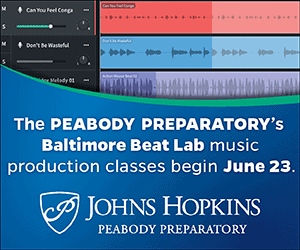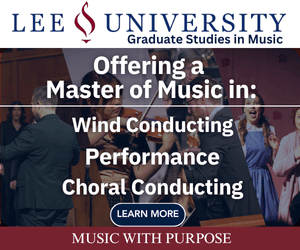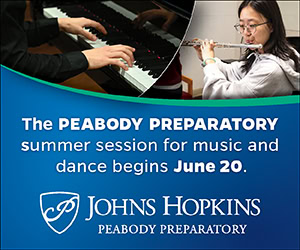/ News Posts / Empowering Students through Sight Reading: A Guide for Music Teachers
Empowering Students through Sight Reading
A Guide for Music Teachers
Sponsored by NAfME Corporate member MakeMusic
What is sight reading?
Being able to look at a brand new piece of music and play it at sight is a pretty amazing skill to have. Just think—what we’re trained as musicians to do is to simultaneously scan and identify various symbols and visual cues, register and process each one (both individually and collectively), and effectively communicate those instructions to other parts of the body to physically produce the correct sounds. Each element of that split-second process requires its own individual development and understanding, spanning everything from pitch, timing, and dynamics to harmony, rhythm, and technique—all of which are essential to becoming a well-rounded musician and capable sight reader.
Because of this, sight reading is a skill that takes time to develop, often improving in the background alongside overall musical ability. Similar to learning to read a book, a student’s musical vocabulary and comprehension require years of deliberate practice (and patience!) to develop. This musical skill set will naturally grow as time goes on, the more they are exposed to new elements of the language.
Why sight reading?
1. It creates confidence
Being able to successfully sight read music on the spot helps musicians measure their ability and overall progress and affirms that hard work pays off. Plus, strong sight readers gain an edge in auditions and other professional settings.
2. Stronger foundation in rhythm and pitch
Improving sight reading fluency also improves the ability to quickly interpret rhythmic patterns combined with interval training and pitch matching.
3. Better ears = stronger accuracy
Being able to hear the music before playing or singing a note is another incredible skill that sight readers develop, also known as audiation. Even if it’s not possible to sing the exact pitches out loud, sight reading helps the ability to feel the rhythm and get the general direction of the melodic notes and harmony just by looking at the music. This improves overall accuracy tremendously because of the ability to anticipate the pitch and rhythm before playing.
4. It’s fun
Playing the same or similar warm-ups and routine drills can often become monotonous. The ability to pull out any piece and play or sing it can be fun, challenging, and rewarding.
5. Expanded musical opportunities
Strong sight readers may find additional opportunities to be of service to other musicians. For example, pianists who sight read well might find themselves accompanying soloists and choirs. They can also play individual parts for rehearsal purposes.
6. More joy
Musicians who are strong sight readers will find learning new music far less stressful, which can ultimately create more enjoyment and connection with their instrument and encourage long-term playing.
Tips for Sight Reading Success
While sight reading often improves in the background alongside general musical ability, there are various ways to ensure success when it comes to deliberate sight reading practice. Inspired by Marianne White’s blog article, Sight Reading Isn’t Scary, here are some practical tips for optimizing sight reading practice:
1. Start Small
Focus on what your students DO know: known pitches/ranges and known rhythmic patterns are a great place to start. Starting a new sight reading routine with students is even easier if you can offer some “quick wins” early on to build confidence. Challenging your students is important at the right time, but providing shorter, simpler exercises as students get their footing can go a long way in building strong and confident readers in the long term!
2. Sight read from the beginning
Even your beginning music students can sight read skill-appropriate exercises! Consider using Sight Reading Studio in MakeMusic Cloud to teach or reinforce a new pitch, fingering, position, or rhythmic element.
Here are some examples:
3. Regularly sight read with your ensembles
Get into a routine of sight reading with your full ensemble—prep some appropriate sight reading templates every 1–2 weeks that you can just shuffle and display on your projector at the beginning of your ensemble rehearsal each day. Students will get good, repeated practice of the same skills you are focusing on and become more confident readers at the same time! Keeping these short and sweet can boost sight reading confidence and efficiently make time fly by.
4. Know your sight reading tool: templates vs. exercises
Sight Reading Studio is a great learning tool. Teachers can share or assign a template that will deliver a similar exercise based on your set parameters or a specific exercise that will deliver the same exact exercise to everyone you send it to.
Ready to take your students’ sight reading skills to the next level? Start incorporating these tips into your lessons today, and explore all the powerful features of Sight Reading Studio to help your students build confidence and find sight reading success without any scaries!
More Sight Reading Resources from MakeMusic Cloud:
- Sight Reading for All: Applications of Sight Reading for Teachers and Students
- Tips and Tricks to Improve Sight Reading
- 90 Days to Sight Reading Success
- Sound Sight-Reading for Concert Band
- Sing at First Sight
For more resources from MakeMusic, visit the MakeMusic blog.
About MakeMusic, Inc.
MakeMusic, Inc., is made up of musicians, developers, and educators with a passion for music. A world leader in music technology, MakeMusic is the creator of MakeMusic Cloud, the interactive practice application, and Sight Reading Studio.
Interested in reprinting this article? Please review the reprint guidelines.
The National Association for Music Education (NAfME) provides a number of forums for the sharing of information and opinion, including blogs and postings on our website, articles and columns in our magazines and journals, and postings to our Amplify member portal. Unless specifically noted, the views expressed in these media do not necessarily represent the policy or views of the Association, its officers, or its employees.
Published Date
December 17, 2024
Category
- Innovation
- Technology
Copyright
December 17, 2024. © National Association for Music Education (NAfME.org)







